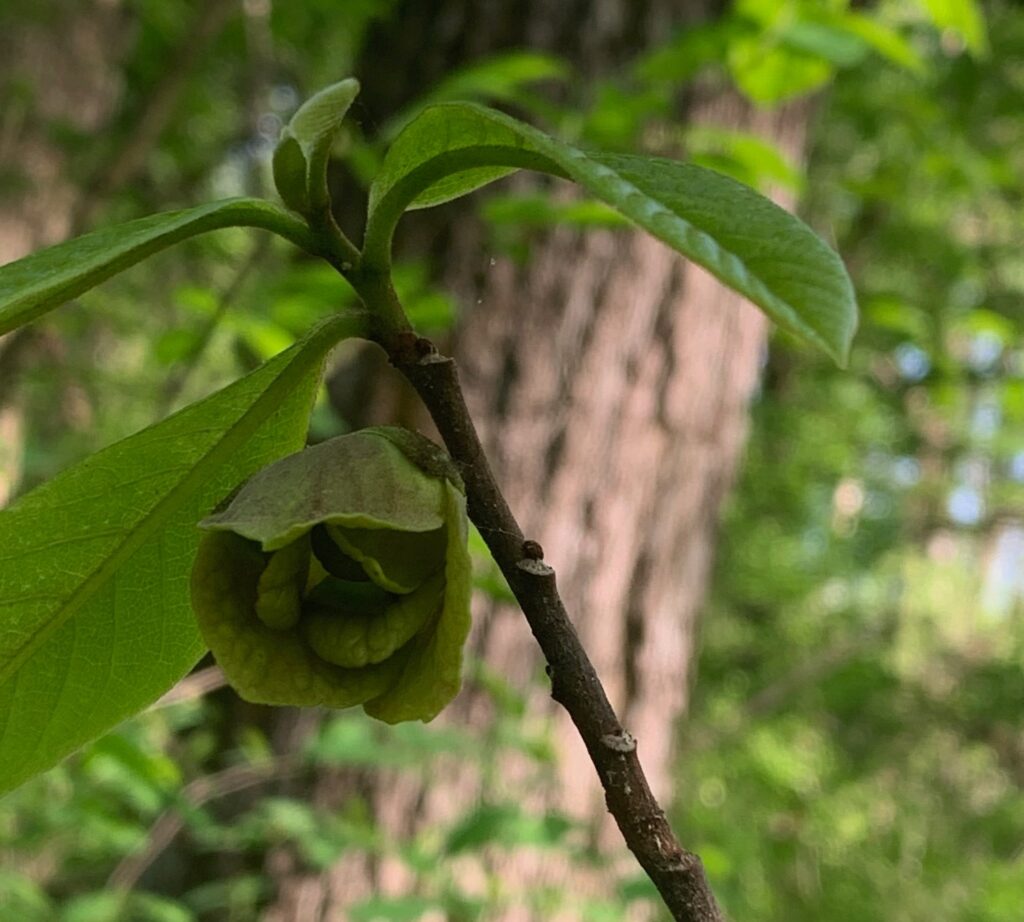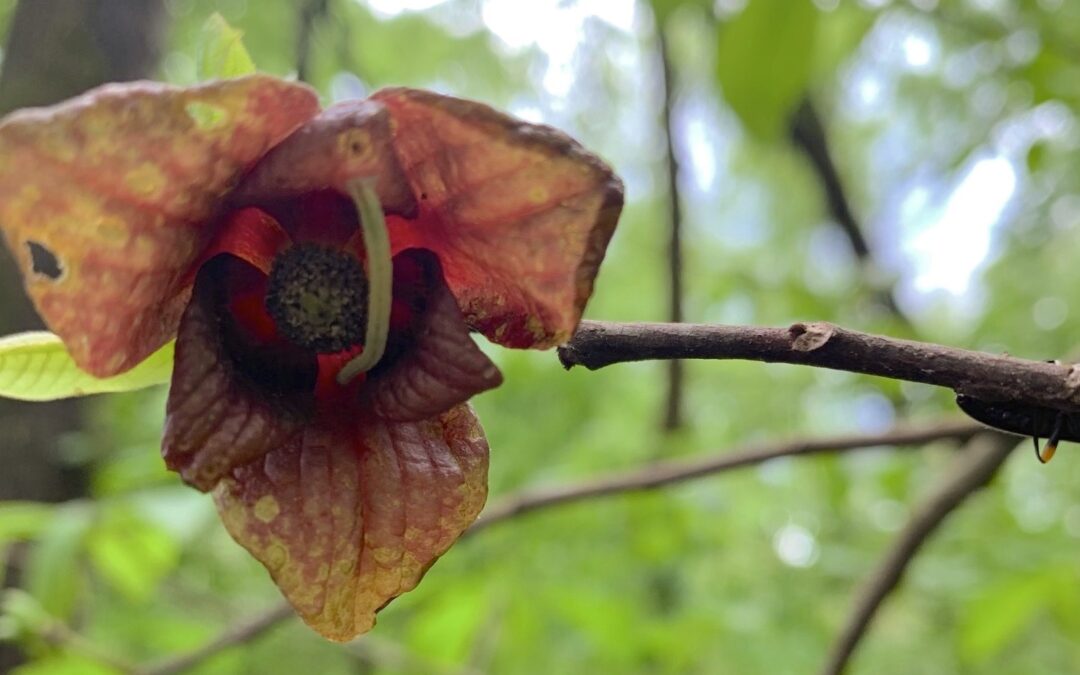Along the creek where we often walk is a cluster of pawpaw trees (Asimina triloba) and spicebush trees (Lindera benzoin). They are not native in the far north, but do well here in West Virginia. These understory trees are about 7 feet tall and take most of the sunshine that makes it through the large overhead trees. They sop up as much sun as they can as it passes through the taller trees. One reason the little wildflowers burst forth in early spring is that they are in a race to get the sunshine before all these taller plants produce leaves that block their sun.
Some people and many animals love the banana-custard tasting pawpaw fruit. These pawpaw trees are still small and don’t seem to produce much fruit. But they do have reddish flowers. We found one with a squiggly green caterpillar. Apparently deer do not browse the pawpaws, because they do not like the taste of the leaves. But they do browse the nearby spicebush, so it is likely that the pawpaws will come to dominate this ecological site.
Here are two pictures of the pawpaw flower. I took the green flower picture several weeks ago. The reddish flower with the caterpillar I took yesterday, so you can see that the flower has changed from green to red. I don’t know whether the caterpillar is one we will be discussing next week, or whether he is a different visitor.

There are 2 notable lepidoptera (butterflies and moths) that raise their caterpillars on pawpaw tree leaves. One is a butterfly called a zebra swallowtail (Eurytides marcellus) and the other is a moth called a pawpaw sphinx moth (Dolba hyloeus). It’s important to understand that the butterflies lay their eggs on the leaves of these trees because they have evolved to choose very specific plants for their caterpillars. Their offspring are also very fussy eaters and will not thrive if their eggs are not laid on paw paw trees.
Of course, we will probably notice the zebra swallowtail and never see the paw paw sphinx, because the zebra swallowtail is showy and flits from tree to tree during the day when we are out and about on our walks. But the pawpaw sphinx is a rather dull brown and grey and usually comes out at dusk and during the evening.
There is a similar story for the showy spicebush swallowtail (Papilio troilus). It flashes its electric blue wings during the day, and lays its eggs on spicebush trees and sassafras trees. These are both understory trees found near small waterways. The promethean moth (Callosamia prometheus) lays its eggs on several trees, including the spicebush tree. Its caterpillars are not so fussy, and will eat ash, basswood, birches, sassafras and several other kinds of leaves. As is the case with most moths, it flies primarily during the late afternoon and evening.
I would like to explain more about the pawpaw and spicebush lepidoptera, but can’t get my paintings finished today. Please be patient and we will continue discussing these important butterflies and moths next week.


